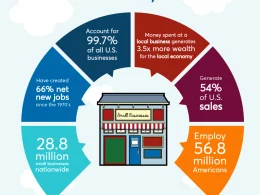For many years, China has been held up as a model of economic success and development. But lately, it has become stuck in what economists call the “mid-income trap”—a slowdown in growth that is preventing it from achieving even higher levels of prosperity. So what exactly is this mid-income trap and why is it so important? In this blog post, we will take a look at how China got stuck in the mid-income trap and what it means for other countries. We’ll examine how China’s approach to economic development could be a cautionary tale for other countries, and how they can avoid similar pitfalls.
The Mid-Income Trap
The “Mid-Income Trap” is a situation where a country’s economy stalls at a certain level of development, preventing it from achieving high-income status. This is often due to a lack of structural reforms and inability to compete with developed countries on an global scale.
China is currently stuck in the mid-income trap, as its economy has reached a point where further growth is hindered by the country’s existing infrastructure and workforce. This has led to increased inequality and poverty, as well as decreased competitiveness in the global marketplace.
The Chinese government has attempted to address these issues through various initiatives, such as the “Made in China 2025” plan, which aims to upgrade the country’s manufacturing capabilities. However, it remains to be seen whether these measures will be successful in lifting China out of the mid-income trap.
The experience of China highlights the challenges that countries face when trying to move up the development ladder. It also serves as a warning for other middle-income countries that are at risk of getting stuck in a similar situation.
How China Got Stuck In The Mid-Income Trap
The mid-income trap is a development phase that countries can get stuck in when their economies reach a certain level of growth and then stall. This happens when a country is no longer able to compete on the global stage with low-wage countries and also can’t keep up with the high-wage, innovation-driven economies.
China got stuck in the mid-income trap because its economy reached a point where it could no longer compete on cheap labor alone. As wages rose, China needed to move up the value chain and start producing more complicated and advanced products. But this transition has been difficult, and China has not been able to keep up with the pace of innovation in developed economies.
The implications of China getting stuck in the mid-income trap are far-reaching. For one, it means that other developing countries may face similar challenges as they try to grow their economies. Additionally, it could mean slower global growth as China’s economy slows down. And finally, it could lead to more tension between developed and developing countries as the latter try to catch up.
What It Means For Other Countries
The “middle-income trap” is a phenomenon whereby countries that experience sustained economic growth reach a point where their per capita income levels off and then fails to rise further. This occurs because these countries are unable to make the transition from low-cost manufacturing to higher-value activities, trapping them in the middle range of incomes.
China is now facing this problem, having reached a plateau in its development after years of strong growth. This presents a challenge for other developing countries who may be following a similar path. If China cannot find a way out of the middle-income trap, it could have serious implications for global economic growth and inequality.
There are a number of factors that have contributed to China’s current predicament. First, the country has relied heavily on investment and exports for economic growth, rather than promoting domestic consumption. This has led to imbalances in the economy and left it vulnerable to external shocks. Second, China has not been able to develop an innovative and entrepreneurial culture, instead relying on imitation and copying of technology from developed countries. This has limited its ability to create new high-value products and services. Finally, China’s political system presents challenges to further reform and development. The Communist Party’s tight control over society and the economy has meant that market-based reforms have been slow and difficult to implement.
Despite these challenges, there are reasons for optimism about China’s future prospects. The country still possesses many strengths, including a large population with rising incomes,
Conclusion
As the world’s second-largest economy, China is in many ways a bellwether for other developing countries. While there are still potential avenues of growth and development available to them, its experience of getting stuck in the mid-income trap serves as an important warning to other nations looking to achieve economic success. Through sound policy decisions and visionary leadership, it may be possible for these countries to avoid similar pitfalls and reach their full economic potential.












